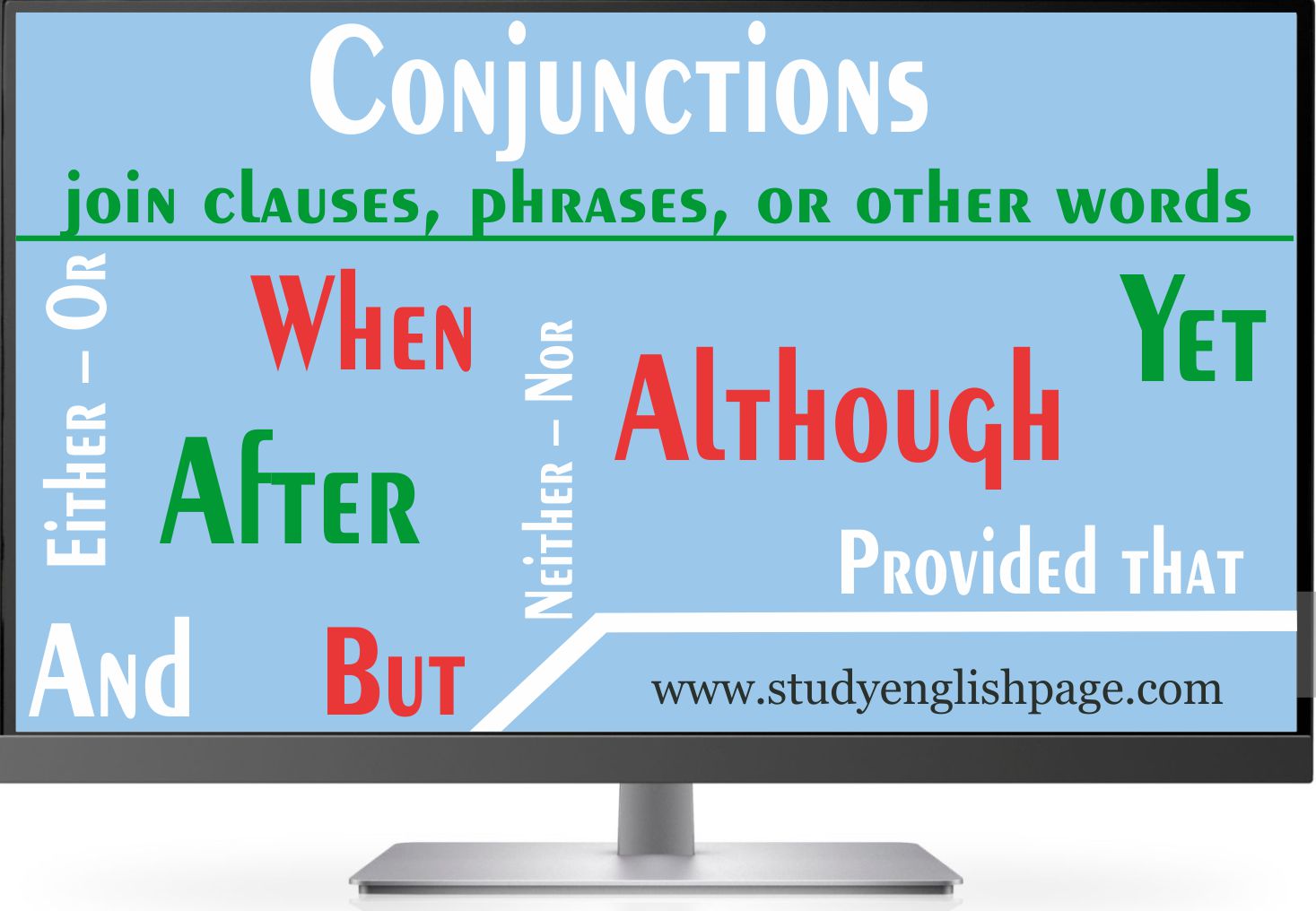Conjunctions
Conjunctions are words that
join clauses, phrases, or other words to construct sentences. A conjunction is
one of the parts of speech. The main job of the conjunction is joining or
connecting parts of a sentence.
Examples of Conjunctions
- We visited the horse and cattle show last Sunday.
- I enjoyed it a lot the show, but Ali did not enjoy it.
- Will you study math or English today night?
- My salary was low, so I resigned.
- She taught for five years, yet she has not gained the best experiences.
- Both John and her wife like jogging.
- I have invited not only you but also other friends for dinner.
- They will invite us either you will go or you will not go.
- I eat neither less nor more.
- Don’t ask such a foolish question that can’t be answered.
- If one starts working hard, success will be his fortune.
- When you get up early, you will healthy and wealthy forever.
- You will not succeed unless you struggle.
- We went to the park where we spent more time.
- I should rest for some time because I am not feeling well.
Types of Conjunctions
Coordinating Conjunctions
Correlative Conjunctions
Subordinate Conjunctions
Coordinating Conjunctions
Coordinating conjunctions join
words, phrases, or independent clauses which are parallel in structure and have
equal importance. We have seven coordinating conjunctions in English. If you
want not to forget them, remember the acronym FANBOYS. It means they are for,
and, nor, but, or, yet, and so.
- I collected wood, and Ali cooked the meal.
- I try my best, but fate does not back me.
Correlative Conjunctions
Correlative conjunctions are
pairs of words. They connect or join two parts of a sentence, and the parts hold
equal value. The two parts are correlated and work in pairs. Correlative
conjunctions include either---or, neither—nor, such—that, whether—or, not
only—but also, both—and, as—as, no sooner-- than, rather—than, if—then,
scarcely—when, just as—so, not—but.
Remember that correlative
conjunctions are used to connect nouns, verbs, adjectives, adverbs, phrases,
prepositional phrases, or clauses.
- He teaches both math and physics.
- They will either call you or send you an invitation.
Subordinating Conjunctions
Subordinating conjunctions are
words that introduce dependent clauses and connect them to independent
clauses. Elements joined by subordinating conjunctions are unparalleled in
structure.
Subordinating conjunctions
include after, before, because, if, in case, although, unless, until, when,
where, whether, etc.
- When she got married, I was 20 years old.
- If they worked honestly, they would not be fired.
- Although he is poor, his help is my priority.
Punctuating Conjunctions
A comma is used before a
coordinating conjunction when it joins two clauses.
- Ali can give you an answer, but Diya cannot give you an answer.
No commas are used before
coordinating conjunctions when they connect words or phrases other than clauses.
- He tried to understand but failed.
When ‘and’ and ‘or’ are used to
join the final two items of a series, we use a comma before the two
conjunctions.
- I bought tomatoes, bananas, and mangoes.
Generally, no commas are used between pairs of correlative conjunctions. A comma can be used if it separates two independent clauses, or it can be used for another grammatical rule.
- Neither he, the father of Ali, nor Muhammad failed the test.
- Not only Ali but also Muhammad got the first position in the class.
- My friend not only give me money, but he also helped in growing my business.
Subordinating conjunctions are
concerned, they are preceded by commas when the subordinating clauses come
after the main clauses.
- If the clothes get dry soon, I will change.
- I will change if the clothes get dry soon.
Key Points about Conjunctions
- Some instructors don’t recommend using coordinating conjunctions at the beginning of a sentence. If it makes the idea effective, we can use it at the beginning.
- The pair (neither.....nor) of correlative conjunctions cannot be used in negative. The word ‘not’ is not used with this pair of conjunction.
- Correlative conjunctions always come in pairs if this is not the case, they will not be considered correlative conjunctions.
- There are two rules to determine subject-verb agreement when we have conjunctions either—or and neither—nor.
- The proximity rule tells us that the subject closest to the verb should be in agreement with the subject. On the other hand, another rule ‘Logic Rule’ tells us that if one of the subjects is plural, the form of the verb will also be plural.
- We use parallel structure when we use correlative conjunctions.
- Subordinating conjunctions are used at the beginning of the subordinate clause.
- Relative pronouns look like subordinating conjunctions, but they are different. Relative pronouns act as the subjects while subordinating conjunctions don’t act as the subjects. They are followed by the subjects.
- Relative adverbs are used as subordinating conjunctions. They connect clauses and add about the actions.

